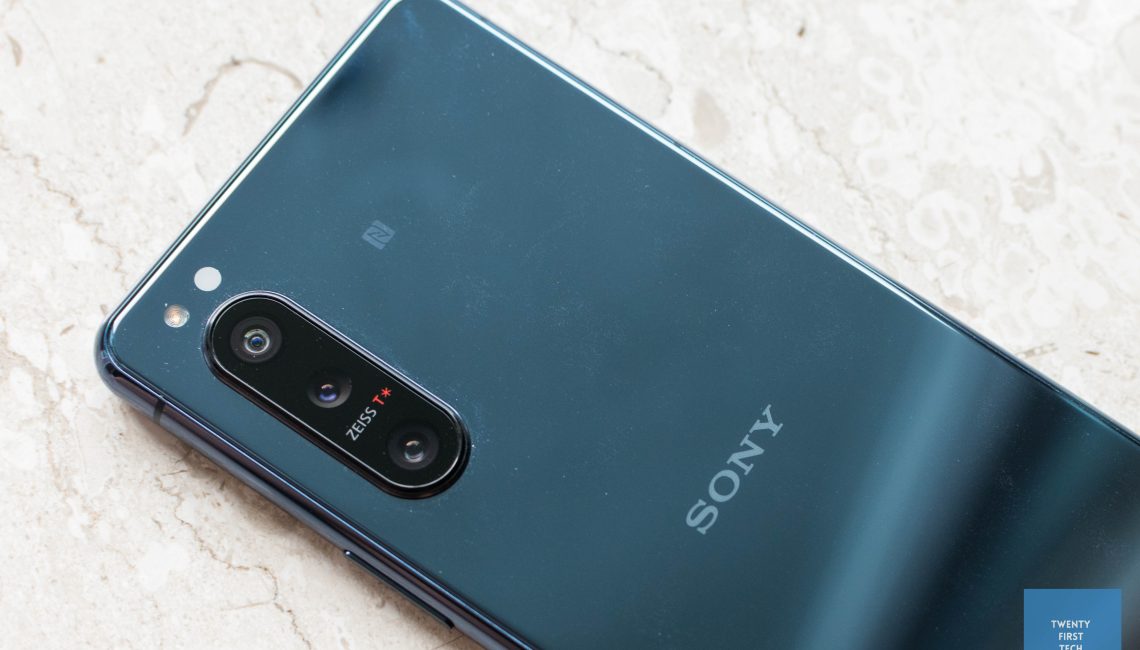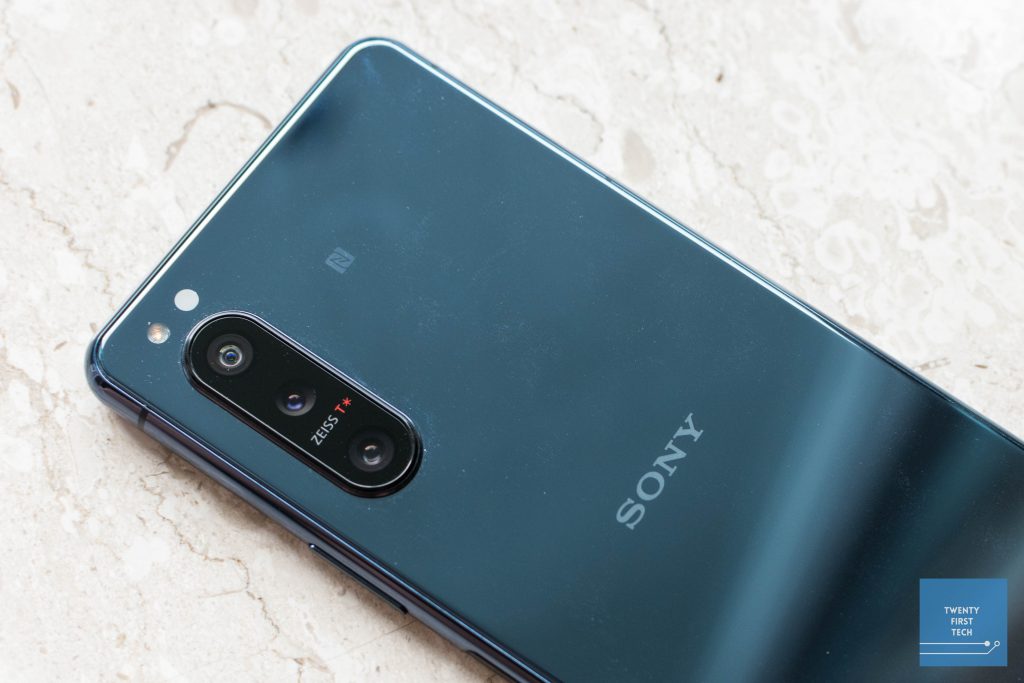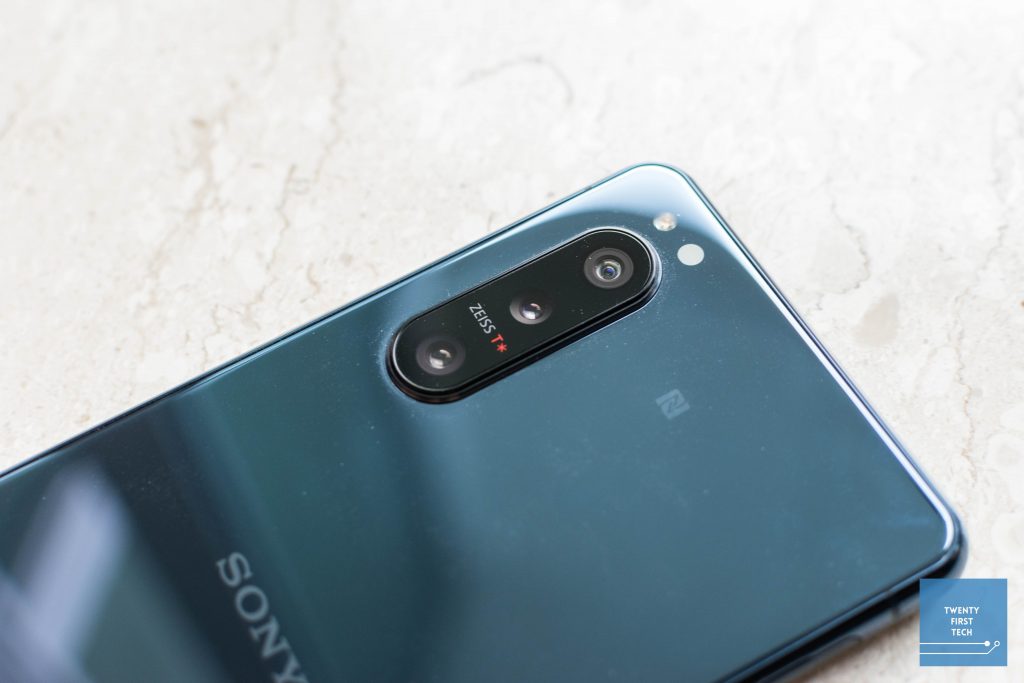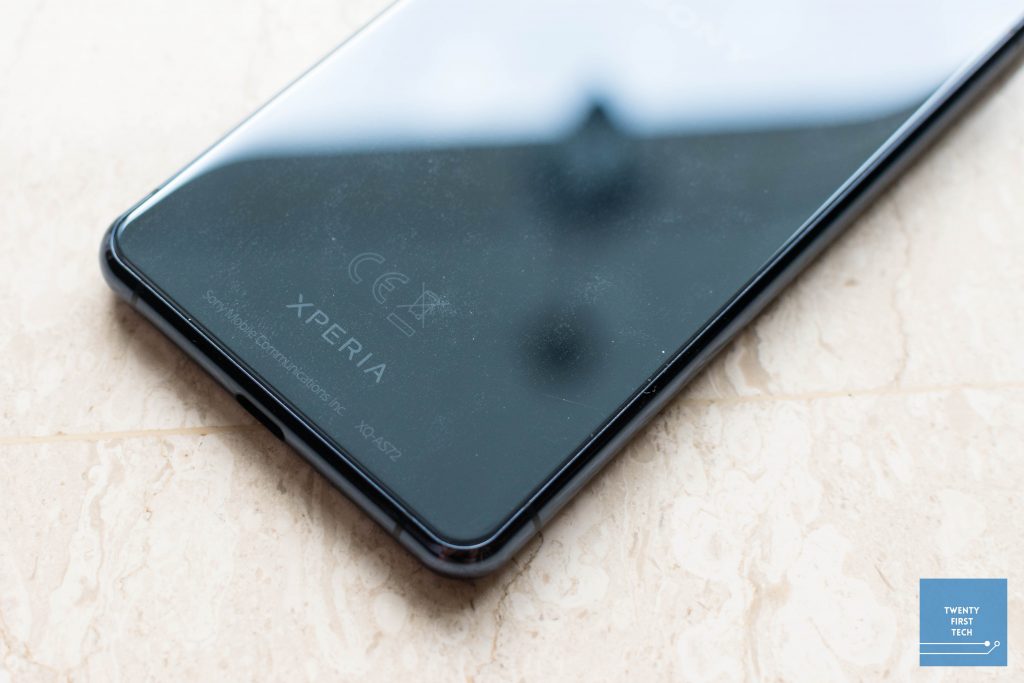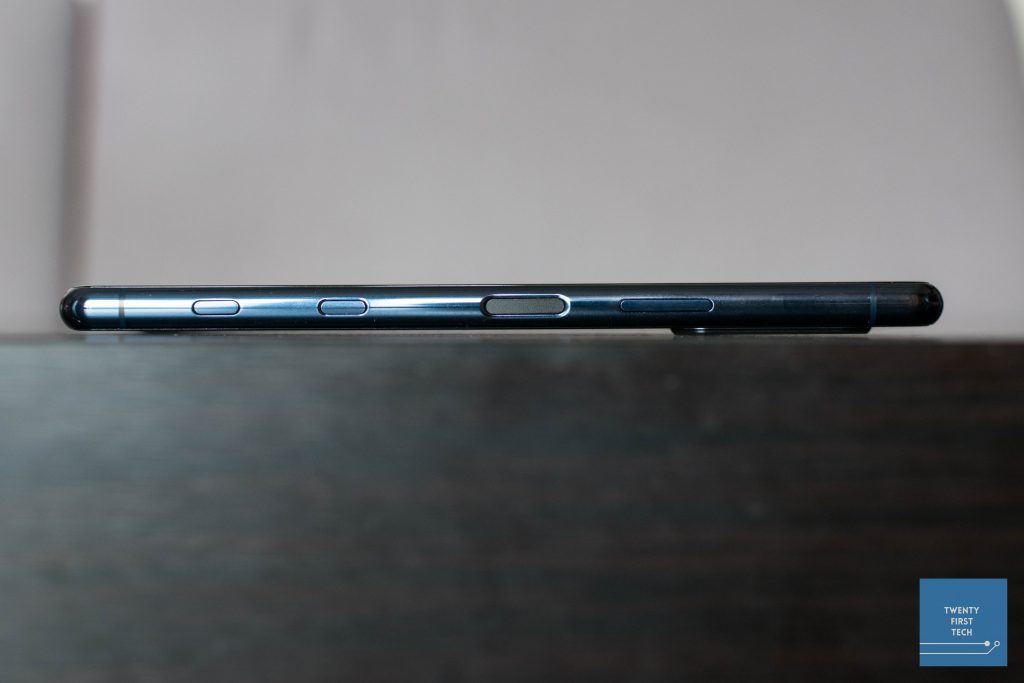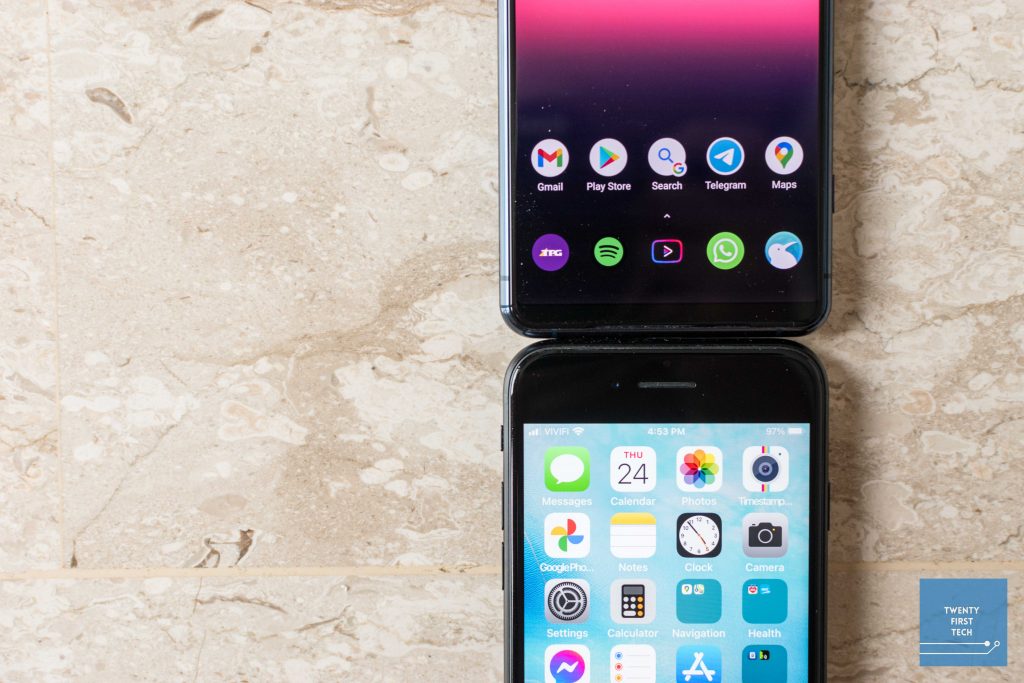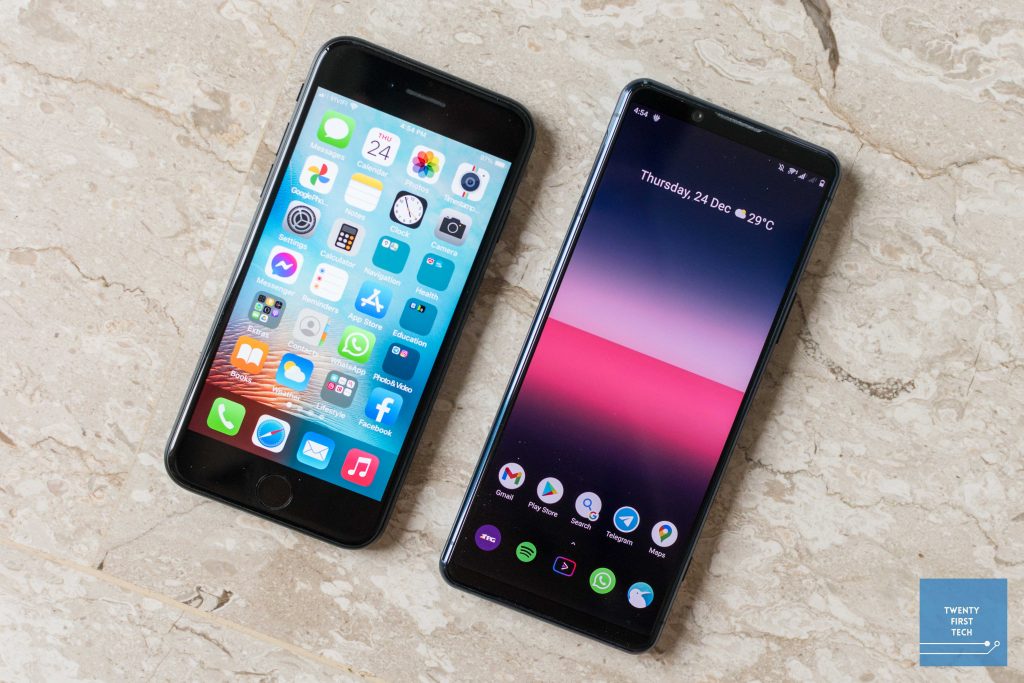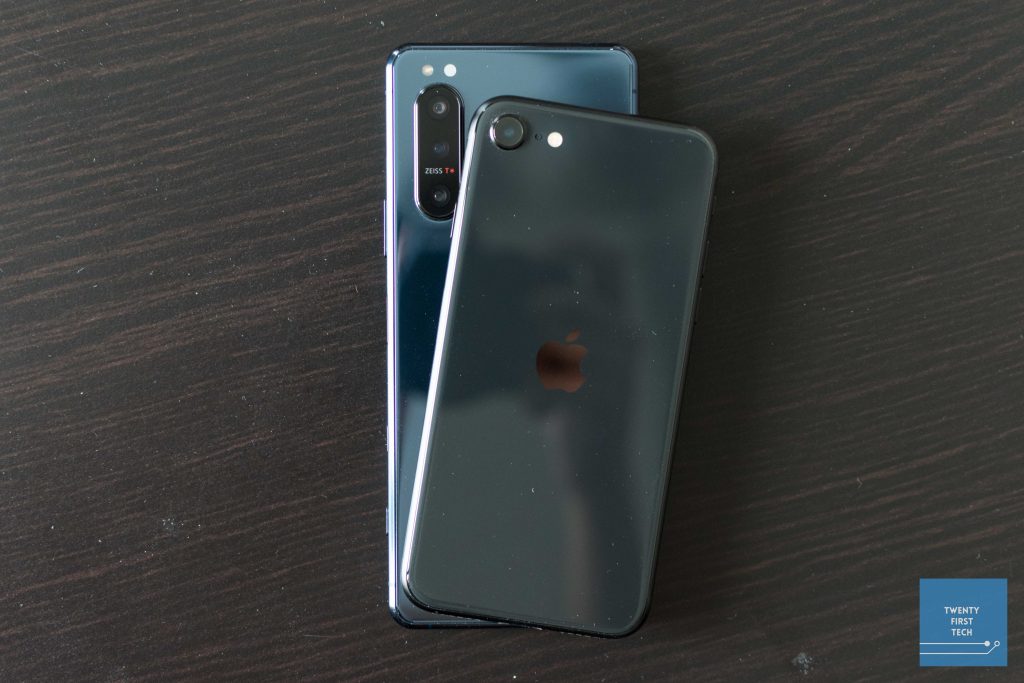The Sony Xperia Z3 was one of my favourite phones of all time. Way back in 2014, it had a simple yet elegant rectangular design, stereo front facing speakers, IP68 water and dust resistance, and clean software.
In many ways, the Xperia 5 II hasn’t changed much from the Xperia Z3. Apart from the strikingly similar design, it also retains many other features from that era. Features such as an LED notification light, front facing stereo speakers, and a notch-less display. These are features that have all but disappeared from current generation phones.
So in many ways, I consider the Xperia 5 II to be a spiritual successor to the Xperia Z3. We’ll discuss more of this in just a moment. But first, the specs.
Sony Xperia 5 II Specifications
- 158 x 68 x 8 mm, 163g
- IP65/68 dust/water resistant
- Gorilla Glass 6 front & back, aluminium frame
- 6.1″ 1080 x 2520 pixels, 21:9 (~449 ppi density) 120Hz HDR OLED display
- Snapdragon 865, Adreno 650
- 256GB/8GB RAM
- microSD or dual-SIM (hybrid slot)
- Cameras
- 12 MP, f/1.7, 24mm (wide)
- 12 MP, f/2.4, 70mm (telephoto)
- 12 MP, f/2.2, 124˚, 16mm (ultrawide)
- 8 MP, f/2.0, 24mm (front)
- 4000mAh battery, USB-C, USB PD, 21W fast-charging, no wireless charging
- Misc: Bluetooth 5.1, WiFi 6, NFC, side-mounted fingerprint sensor, LED notification light, headphone jack
- Colours: Black, Blue, Pink
Design & Build
The design of Xperia phones have practically been unchanged for generations. That means rectangular, with flat front and back glass panels, and slightly curved sides for better grip. It’s a practical and minimal design; I liked it then, and I like it now.
The phone is considered compact by today’s standards. While it’s not as small as something like the iPhone 12 mini, it certainly is comfortable to hold. The width of the phone is about the width of an iPhone SE (2020), and the phone’s comfort can be largely attributed to this. I’d say the iPhone SE (2020), Pixel 4a, and this are roughly in the same category when it comes to size.
Where the Xperia differs from these other phones is in its height. With a 21:9 aspect ratio, this is a tall phone, and this may pose as a challenge for some people. I personally didn’t find it to be much of an issue, as the software allows for a swipe down anywhere on the screen to pull down the notification shade. But you probably will have to adjust your grip to reach elements at the top of the screen.
Build quality is excellent; the device feels solid, and the transition from glass to the aluminium frame is mostly seamless. 163g is also relatively lightweight for a phone, and I found it to be much more comfortable to use for extended periods of time than most other phones I’ve tested this year.
My only complaint about the build are the buttons. They are mushy, wobbly, and overall unsatisfying to press.
They’re also all cramped into the right side of the device. The volume rocker is consequently quite small, and easy to mistake for the power button.
Below that is the fingerprint scanner integrated into the side-mounted power button. It is fast and accurate, and conveniently placed, but perhaps too conveniently so. I found myself having to consciously avoid touching it less I accidentally unlock the phone while handling it.
Further down is a dedicated button for launching the Google Assistant, but it is so recessed and so inconveniently located near the bottom that realistically I’d never use it.
Lastly, there is a dedicated camera shutter button. You can press and hold to quickly launch the camera, and do a half-press to focus. But just like the other buttons, it’s mushy and highly unsatisfying to press.
Display
Sony has opted for super tall 21:9 6.1″ display on the Xperia 5 II. This means that movies fit nicely on the screen, but traditional 16:9 or 18:9 videos on YouTube will have massive black bars on the sides. The physical area that a 16:9 video occupies on the Xperia’s screen is just slightly larger than that of the 4.7″ iPhone SE (2020).
Perhaps more interesting in 2020 is the fact that the display on the Xperia 5 II has no notch or cutout of any kind. This makes for a clean, symmetrical front, something which is very rare in phones these days. It does mean that there is a bit of top and bottom bezel, but I think it looks great.
The refresh rate is an ultra-smooth 120Hz. Sony chose to go all out on this one — in the software you can opt for either 60Hz or 120Hz; there is no intermediate 90Hz option. As I’ve mentioned in many reviews prior to this, 120Hz is such a huge step up that once your eyes become accustomed to it, regular 60Hz displays will appear choppy or laggy.
Other than this, the display is also HDR compliant, so certain shows on Netflix that are able to take advantage of this will look great. The 1080p resolution gives a pixel density of 449 ppi at this screen size, which is plenty sharp.
The display is OLED so you get infinitely deep blacks and vibrant colours. In the software, you can opt for Standard mode, which is more vivid but less colour accurate, or Creator mode, which is more colour accurate. You can also manually adjust white balance. The screen gets dim enough to use in the dark, but while visible outdoors, I wish it was just slightly brighter.
Cameras
Sony’s mobile cameras historically haven’t been very good despite producing most of the world’s smartphone camera sensors and leading the charge in mirrorless full frame cameras with the Alpha series. The Xperia 5 II sets out to fix that, and for the most part, it succeeds.
First off, I appreciate the fact that Sony has put in a proper triple-camera setup on the Xperia 5 II: 12MP sensors behind wide, ultrawide and telephoto lenses. No macro, monochrome, or — god forbid — depth cameras.
Image quality from these 3 cameras are also really good. In the day, there is a good amount of dynamic range, detail, and sharpness in the images. Images also tend to be more colour accurate and less contrast-y than something from a Samsung phone. I personally prefer this, but you may have a penchant for the more saturated look that Samsung provides.
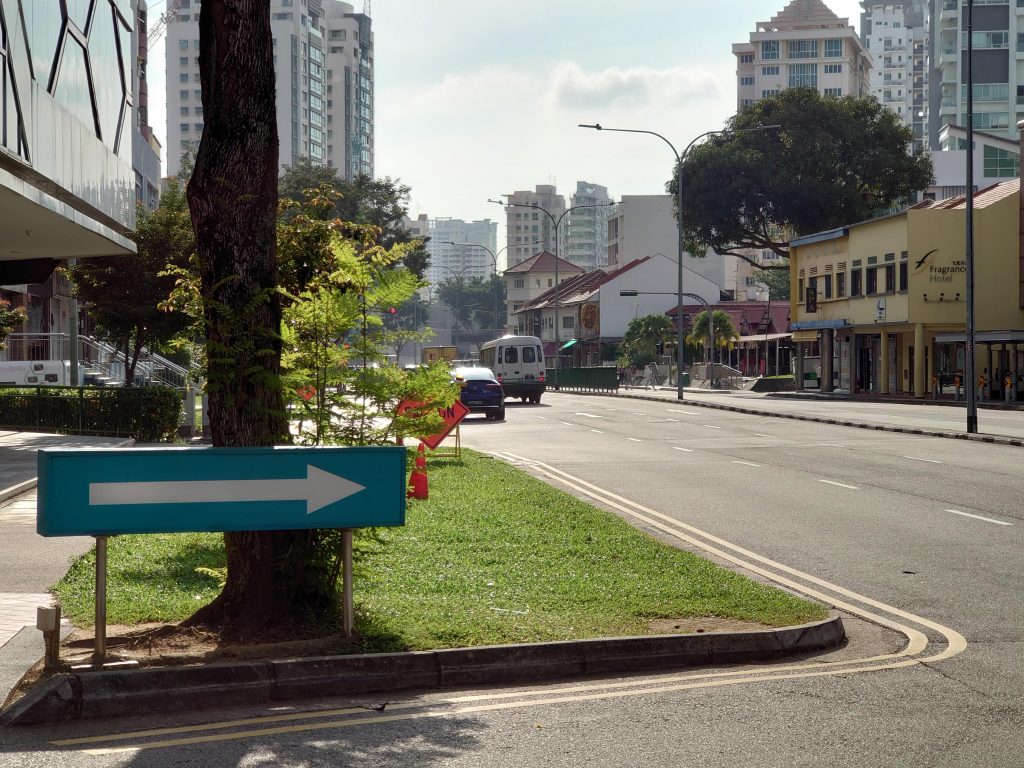
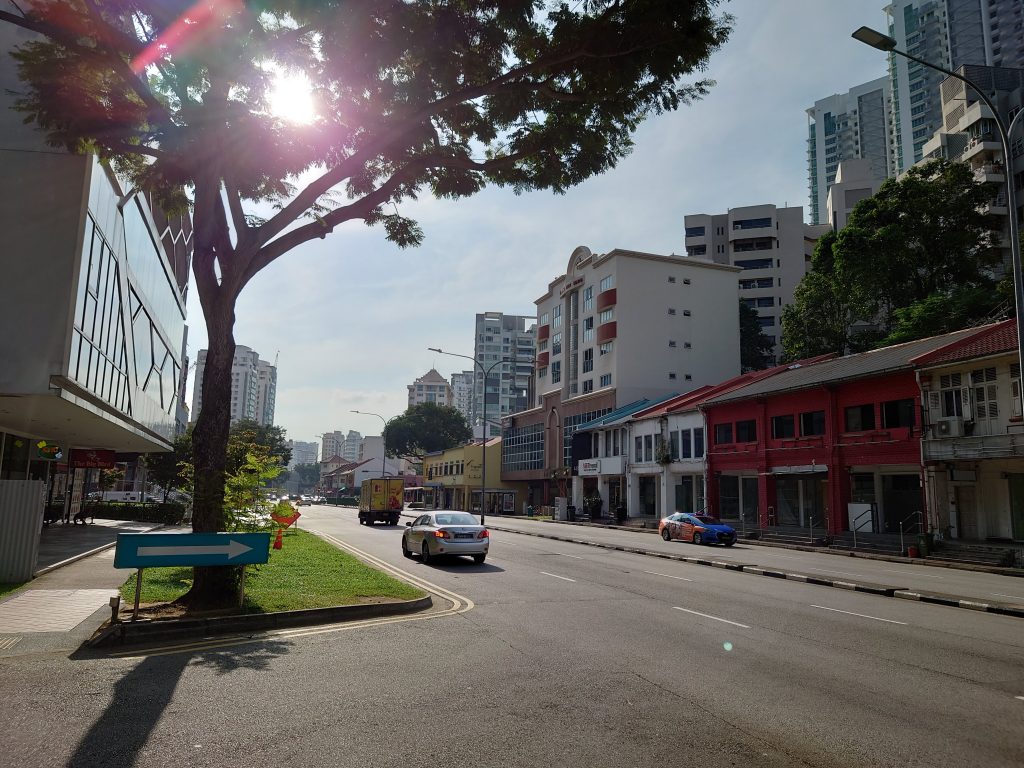
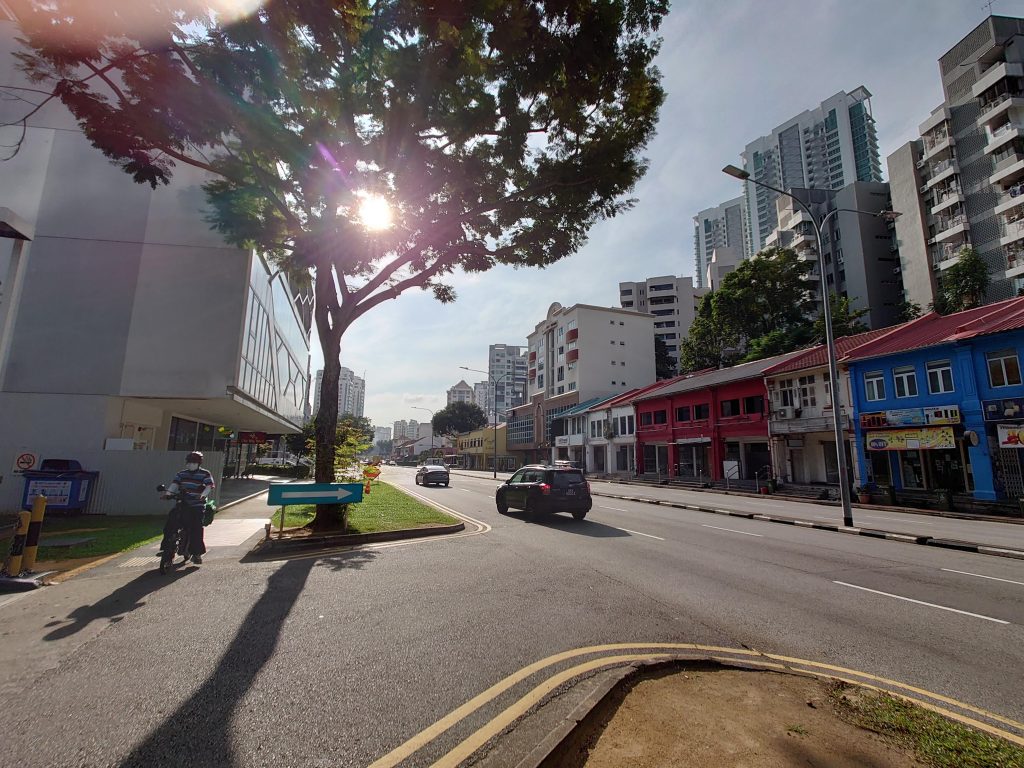
There is no dedicated night mode, but the camera seems to recognise when there is low-light and automatically takes a longer exposure. The result isn’t the best I’ve seen. Highlights are blown out while some of the shadows are still crushed. Even the OnePlus 8T does a better job in this regard. The poor low-light dynamic range is most likely a result of Sony’s post-processing software, which falls behind the computational photography provided by Apple, Samsung or Google.
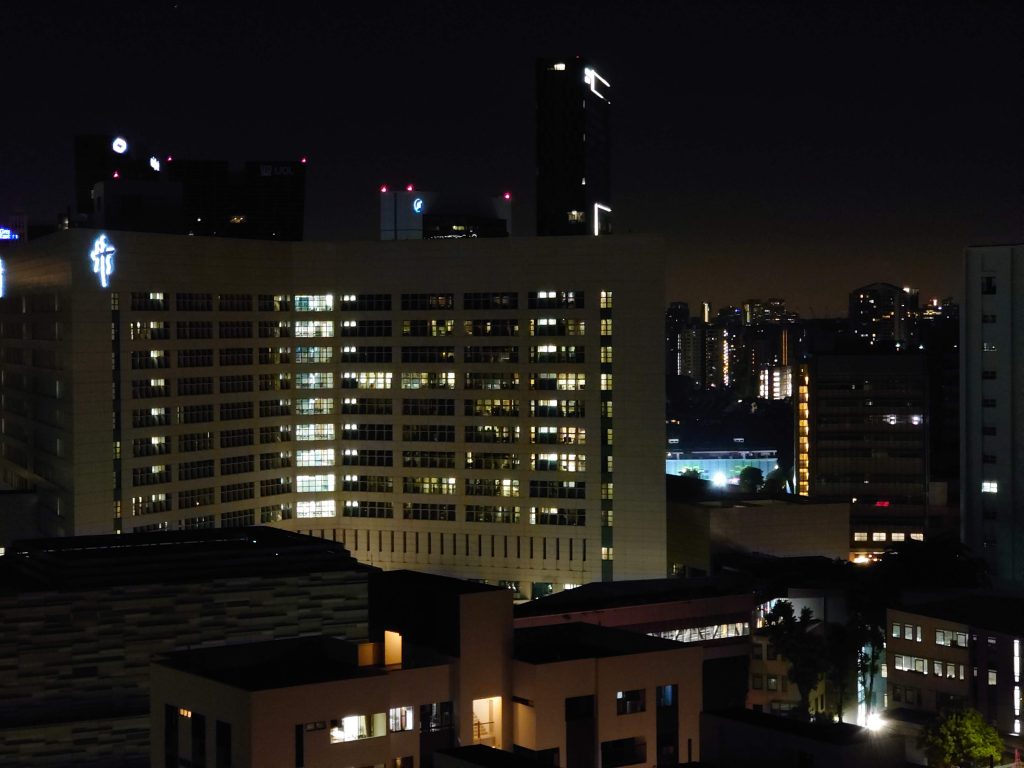


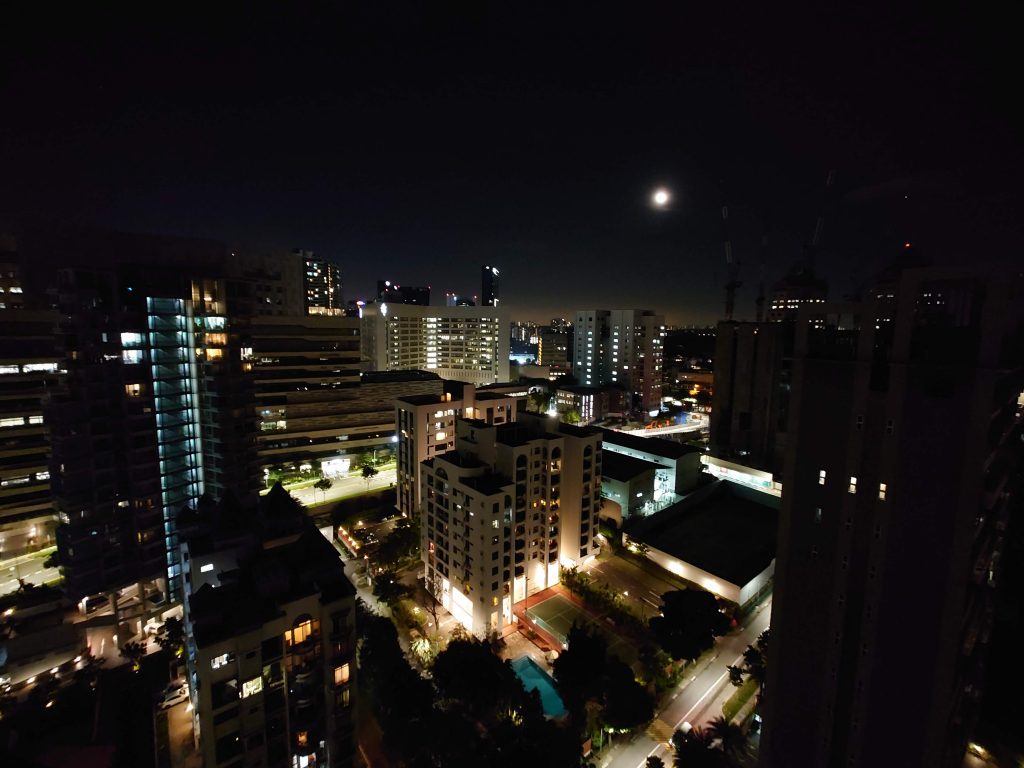
There are some other useful features brought over from the company’s Alpha line of cameras. In particular, the regular camera app features eye tracking autofocus, which works really well.
For the professionals, Sony has included the Photo Pro and Cinema Pro apps. These apps offer more manual control over photo and video respectively, and are modelled after their professional cameras. I’m a photographer myself, and I found the interface of the Photo Pro app to be rather clean and intuitive, though I wished that the viewfinder was bigger. I don’t know too much about videography, but the Cinema Pro app does allow for plenty of manual control over things like the FPS (24, 25, 30, 60) and even provides the Venice colour science from its professional cameras.
Personally, I still wouldn’t use a smartphone for serious photography. I believe that smartphones are more for a quick point-and-shoot experience, and if I’d really need some proper manual controls over my camera, I’d use my DSLR. That’s just my own philosophy. Still, the option is nice to have.
One gripe that I do have with the cameras is in the software. Unlike all other smartphones, the Xperia 5 II does not automatically switch between lenses when zooming. Instead, you choose from one of three lenses, and any zooming that you do in the viewfinder is purely digital. I found this to be a hassle, and I’m sure some consumers would find it rather confusing as well.
On top of that, there is no quick way to change the video resolution in the regular camera app. You’d have to go into the settings to change this. This has been an issue on Xperia phones for as long as I can remember.
Software
Software is perhaps my biggest concern with the Xperia 5 II. But let’s talk about the positives first. The UX is clean and relatively close to stock Android, with some neat added features. These are things like Dolby Atmos, and robust battery care options such as limiting a full charge to 80% in order to preserve battery longevity.
Now on to the bad stuff.
Out of the box, the Xperia 5 II ships with Android 10. It’s simply not good for a phone launching in November 2020 with Android 10 when Android 11 has already been out for many months. To be fair, Sony has since released the Android 11 update for the Xperia 1 II, and announced that the Xperia 5 II will get the update in January 2021.
Further to Sony’s credit, I did receive a software update with my review unit. But to their discredit, there was no changelog so I have no idea what was included in the update. The security patch level did get updated to December 2020, so at least that’s good.
More importantly, there is no commitment from Sony on future updates. With many brands like Samsung, OnePlus, and Google promising 3 Android OS updates, Sony is sorely lacking behind on this front.
There are also apps that come pre-installed no doubt from corporate partnerships. Apps like Call of Duty Mobile and LinkedIn, which cannot be uninstalled from the device. Annoying, given that Call of Duty takes up 2.44GB of storage.
There are also other quirks in the software. The app switcher stutters when there are many apps open. Netflix sometimes throws an error and refuses to play video unless the phone is restarted. The phone gets really hot while charging. Gmail refuses to send push notifications even after I disabled battery optimisation for the app. These aren’t deal-breaking, but they can be frustrating, and I’m not sure if Sony will fix them.
Miscellaneous
I’ll briefly go through some other things to take note regarding this phone.
It’s got a Snapdragon 865 and 8GB of RAM, meaning that performance is on par with any other flagship Android phone of this year. But it also means that performance will be very quickly eclipsed when Snapdragon 888 phones start releasing next month.
Battery life on the Xperia 5 II is good, even with the display constantly running at 120Hz. I am consistently getting 4-6 hours of screen on time, with the phone lasting me through the day. Sony’s battery software features will also help to maintain the long-term lifespan of the battery as well. An 18W USB-PD charger is bundled in the box, which will get you 40-ish% in half an hour, which isn’t fast by today’s standards. There is no wireless charging.
The phone vibrates a lot when audio is being played through the speakers, even when the dynamic vibration feature is off. This can be annoying to some. The speakers are front facing and stereo, but they don’t get very loud and don’t sound particularly clear.
The vibration motor on this phone doesn’t provide the subtle haptic feedback that I come to expect from modern smartphones like the Pixel or iPhone. It’s still relatively “buzzy” feeling, though nowhere near as bad as something like my OnePlus 6T from 2018.
Pricing & conclusion
Pros
- Compact, lightweight
- Notch-less symmetrical 120Hz OLED display
- Good triple-camera array (wide, ultrawide, telephoto) with good daytime image quality and interesting features like eye-tracking AF
- Photo Pro and Cinema Pro apps for more manual professional control
- Front facing stereo speakers, though could be louder and clearer
- IP65/68 water and dust resistant
- Good battery life, with good software features to aid in battery longevity
- Old goodies: LED notification light, headphone jack
Cons
- Mushy, cramped buttons detract from otherwise excellent build
- Low-light photography falls behind the competition
- Software quirks like not automatically switching lenses when zooming or taking video, overheating, problems with launching Netflix
- Added software such as LinkedIn and Call of Duty Mobile which cannot be uninstalled
- Questionable software support
- No wireless charging
- S$1,349 is a steep asking price
All in all, the Xperia 5 II is a phone from a time that is long gone.
That’s both a good and a bad thing. On the one hand, it means that you get a clean design with no notch on the display. You also get a no-nonsense capacitive fingerprint scanner instead of the under-display sensors that’s standard for 2020. There’s front facing stereo speakers, a physical camera shutter, an LED notification light, and a headphone jack.
But on the other hand, it also means you get the same Sony quirks in the camera software as before, like no quick way to switch video resolutions, no automatic switching between lenses when zooming or taking video, and a pop-up warning about overheating when taking 4K video. And so far, it seems like you’re also getting the same questionable software support of the early 2010’s.
Ultimately, I enjoyed my time with the Xperia 5 II. The compact form factor and the 120Hz display make this phone a genuine joy to use day to day. It has a proper set of cameras on the back (wide, ultrawide, telephoto) with good daytime image quality. Coupled with clean software and a clean design, this makes the Xperia 5 II a well-rounded package.
I do have some reservations when recommending the phone though. For one, it costs S$1,349, which is extremely steep for a phone of this calibre. In comparison, the OnePlus 8T has similar specs and better software support, but starts from S$899. Granted, the Xperia is currently bundled with WH-H910N Headphones (worth $399) for that price, but still.
My other reservation is in software support. There are the aforementioned bugs in the current software that I frankly doubt Sony will fix. Sony is also taking a long time pushing out the Android 11 update, and given its past track record, there is no guarantee of when or if future updates will be pushed out to this phone.
If you’re able to look past these two sticking points, then I believe that the Xperia 5 II is an excellent phone, and you will have a wonderful time using it.
You can purchase the Xperia 5 II on Lazada or Sony’s website. Though at the time of this writing, they seem to be out of stock.
As always, when purchasing online, check if you can get additional cashback on your purchase with ShopBack. You can also check out our deals page for more Singapore deals.
Liked this review? Follow us on Facebook, Twitter or Instagram for more updates!

